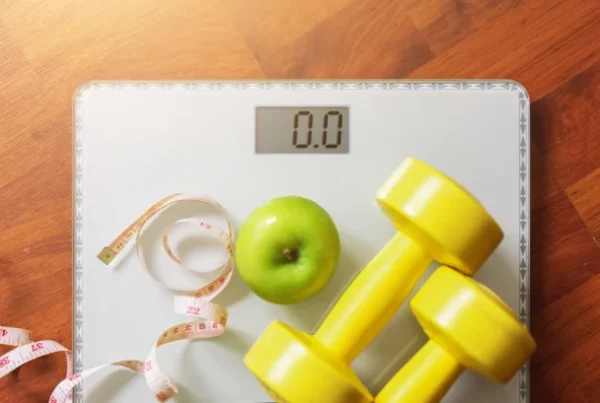
The following blog post is for entertainment and informational purposes only. It is not intended to provide medical advice or diagnosis. Please consult your doctor before making any health-related decisions.
Due to the ability to repair tissue damage, regulate inflammation, and heal gastrointestinal issues, the therapeutic possibilities of BPC-157 have attracted significant interest from medical specialists. However, identifying the ideal BPC 157 dosage for obtaining these health benefits requires more attention.
Now, we explore different factors that impact determining optimal dosage levels and offer guidance on maximizing results with this powerful compound.Comprehending the pharmacokinetics and mechanisms of action of this medicine is needed before determining BPC-157 dosage. The way the medicine functions involves promoting growth factor generation, hastening tissue regeneration, and modulating inflammatory pathways. Also, it poses protective effects on the gastrointestinal tract. This medicine can become a hopeful solution for managing many health conditions.
Influence on BPC 157 Dosage

Condition Being Treated
The appropriate BPC 157 dosage is determined by the condition’s severity and nature. In cases of acute injuries or conditions, a higher initial dose can be necessary to initiate healing. Maintenance doses afterward for ongoing benefits are required. Chronic conditions typically require extended treatment with lower maintenance BPC 157 dosage.
Body Weight and Composition
The optimal BPC 157 dosage is significantly influenced by body weight and composition. The following are ways in which these aspects impact the appropriate dose:
Metabolic Rate and Clearance
Metabolic rate and drug clearance are influenced by body weight. Those with a higher body mass may experience faster metabolism and elimination of BPC-157 dosage as compared to those with lower body weights, thus necessitating larger doses for achieving the desired therapeutic levels.
Lean Body Mass vs. Fat Percentage
The composition of one’s body, particularly the proportion between lean mass and fat percentage, can impact how BPC 157 dosage is spread throughout and expelled from the body. As muscle, organs, and bones found in lean mass have elevated metabolic activity and circulation relative to adipose tissue; individuals possessing greater amounts of their weight as lean mass may necessitate increased BPC-157 dosage for optimal health outcomes when contrasted with those who possess higher proportions of fat within their bodies.
Distribution Volume
The distribution volume of drugs within the body is influenced by one’s body weight. The extent to which BPC-157 gets distributed across tissues and fluids in the body depends on its own distribution volume. If a person weights more, their larger distribution volume may call for higher BPC 157 dosage so as to attain therapeutic concentrations in targeted tissues.
Response Variability
Body weight and composition are possible contributors to the variability in response to BPC-157 therapy among individuals. Other factors, including genetic predisposition, underlying health issues, and concurrent medications can also combine with body weight to influence both the effectiveness and safety of treatment. Optimizing outcomes requires careful monitoring of patient responses as well as adjusting BPC 157 dosage based on individual needs.
BPC-157 Dosage Adjustment
To consider variations in metabolic rate, distribution volume, and individual response, medical service professionals can modify BPC-157 dosage according to body weight and composition. Commencing therapy with a smaller amount and gradually increasing it requires taking into account the patient’s tolerance. This method can advance therapeutic benefits and lower the chances of undesirable consequences.In order to determine the ideal BPC 157 dosage for each patient, medical service specialists must evaluate their body weight and composition. This consideration enables them to prescribe tailored therapeutic regimens to achieve optimal benefits and prioritize a person’s safety.
Administration Route
BPC-157’s bioavailability and efficacy can be influenced by the route of administration. Oral, subcutaneous, and intramuscular routes are frequently used; however, each may necessitate unique dosing approaches to achieve desired effects. For instance, oral intake might require larger BPC-157 dosages due to its lower bioavailability when compared with parenteral routes.
Frequency of Administration

Optimal BPC-157 dosage highly depends on the frequency of administration.
Half-Life and Duration of Action
The duration of BPC-157’s efficacy differs due to personal factors and the method of administration. Due to its short half-life, this medicine is rapidly eliminated from the organism. The frequency of intake often depends on these variables. Intravenous administration may require more frequent BPC 157 dosages due to differences in absorption and clearance rates.
Maintaining Therapeutic Amounts
Maintaining therapeutic amounts of this medicine in the organism depends on its frequency of administration. Depending on the desired effects and medical condition, BPC-157 can require daily or intermittent dosing several times per week. Acute injuries or conditions that necessitate speedy tissue regeneration may need higher doses compared to maintenance therapy for chronic ailments which would suffice with lower dose frequencies.
Peak and Trough Levels

The levels of BPC-157 in the body’s peak and trough are affected by how often it is administered. After administration, there is a surge in its level before reaching its lowest concentration between BPC-157 dosages referred to as trough. To effectively sustain therapeutic benefits with minimal fluctuations in efficacy throughout the dosing period, the optimal frequency must be achieved conducive to maintaining a desirable therapy range at all times.
Cumulative Effects
The cumulative impacts of BPC-157 can be influenced by the frequency of its administration. Consistent dosing regimes facilitate the build-up of BPC-157 in specific tissues, leading to constant tissue repair and modulation of inflammation. Although intermittent or sporadic BPC 157 dosage may offer advantages, they might not yield comparable long-lasting therapeutic effects as seen with more frequent intake schedules.
Individual Response and Tolerance
The ideal frequency of administering BPC-157 can be influenced by their treatment response and tolerance levels. Some people can need a daily BPC-157 dosage for better results. Others with slower clearance rates or higher susceptibility to the peptide might require less frequent administration. So, medical specialists need to keep a close eye on how each person responds and adjust the BPC 157 dosage schedule accordingly to achieve optimal therapeutic outcomes.To determine the best BPC-157 dosage for patients, medical service specialists must take into account the frequency of administration. Duration of action, desired therapeutic effects, peak and trough levels, cumulative effects and individual patient factors should be used to personalize dosing regimens. This ensures receiving maximum benefits from therapy while minimizing adverse side effects.
Optimizing BPC-157 Dosage for Health Benefits

To attain maximum health advantages from this medicine, a customized method to determine the appropriate dosage and administration is necessary. Thus, healthcare providers should bear in mind the subsequent tactics:
Start Low, Go Slow
Start with a lower BPC 157 dosage and progressively increase it according to personal reaction and capacity. This method reduces the likelihood of unfavorable outcomes while also allowing for discovering the most suitable dose required.
Tailor Dosage to Specific Conditions

Individualize the BPC-157 dosage by considering the severity and duration of the condition, and any underlying pathophysiology. Work closely with medical service specialists to devise personalized treatment regimens according to your needs.
Monitor Patient Response
It is important to consistently assess the patient’s reaction to BPC-157 treatment, such as improvements in symptoms and any negative effects or alterations of biomarkers and diagnostic indicators. Modify dosage and treatments accordingly for optimal therapeutic results while ensuring the safety of the individual undergoing therapy.
Consider Combination Therapy
Combining BPC-157 with other therapeutic methods like physical therapy, nutritional support, or pharmacological agents may boost its effectiveness and synergies in specific cases. It is recommended to work closely with interdisciplinary healthcare teams to explore complementary treatment approaches.
Adhere to Safety Guidelines

Follow the approved safety protocols and suggestions for BPC-157 dosage administration, which includes correct handling, storage, and aseptic preparation methods. Optimizing the health benefits of BPC-157 involves taking multiple factors into account. Body weight and composition, administration frequency and route, individual response to treatment, and the specific condition must be considered. Personalized dosing strategies can be developed by medical specialists. They also adhere to safety guidelines and monitor their patients’ reactions. This approach promotes optimal tissue repair and inflammation reduction for general well-being. More research is necessary on various populations to uncover ideal BPC-157 dosage ranges along with therapeutic applications that best suit different patient needs in clinical trials conducted continuously over time.





